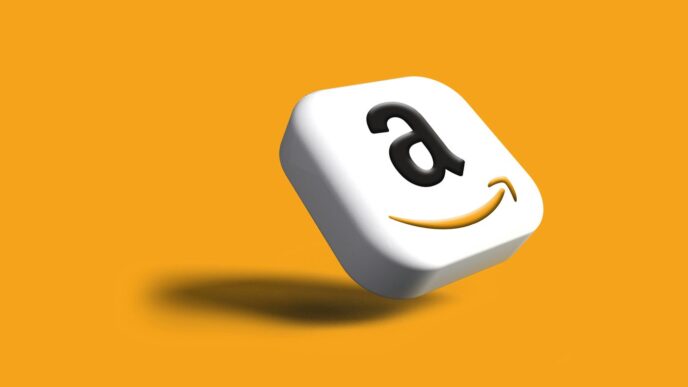In the ever-evolving world of business, staying competitive is key. As we move into 2025, entrepreneurs need to embrace fresh marketing strategies to connect with their audience and grow their brands. Whether you’re just starting out or looking to scale, these entrepreneur marketing tips will help you navigate the digital landscape effectively. Let’s explore ten essential strategies that can make a difference for your business this year.
Key Takeaways
- Effective marketing is about connecting with your audience, so focus on building relationships through engaging content and social media.
- Utilizing data analytics can provide insights into customer behavior, helping you tailor your marketing strategies for better results.
- Adapting to market trends and being flexible with your approach are crucial for staying relevant and competitive in your industry.
1. Content Marketing
Okay, so content marketing. It’s still a big deal in 2025. I know, I know, you’ve heard it a million times, but seriously, if you aren’t putting out good stuff, how are people going to find you? It’s like, if you don’t exist online, do you even exist at all?
Think about it: people are searching for answers, solutions, and entertainment all day long. If you can be the one providing that, you’re golden. It’s not just about selling; it’s about building trust and showing that you know your stuff.
Here’s the deal:
- Blogs are still relevant. Start a blog, share your thoughts, and help people out. Make sure your content is king and provides real value. Don’t just write fluff.
- Videos are huge. People love watching stuff. Create tutorials, behind-the-scenes looks, or even just fun, engaging content. Get creative!
- Infographics are your friend. Turn boring data into something visually appealing. People are more likely to remember something if it looks good.
Basically, content marketing is about showing, not just telling. It’s about building a relationship with your audience and becoming a go-to resource. It takes time and effort, but it’s worth it in the long run. You can build brand authority by creating content that is valuable and informative. Trust me.
2. Social Media Engagement

Okay, so social media. It’s not just about posting pretty pictures anymore. If you want to actually see your business grow in 2025, you’ve got to get serious about engagement. Think of it as building relationships, not just broadcasting ads. It’s about creating a loyal community around your brand.
Here’s the deal:
- Actually Respond to People: This sounds obvious, but so many businesses just ignore comments and messages. If someone takes the time to reach out, answer them! Even a quick "thanks for your support!" goes a long way. Don’t leave them hanging. It shows you care and builds trust. Think of it as good social media optimization.
- Run Interactive Polls and Q&As: People love to share their opinions. Use polls on platforms like Instagram and X (formerly Twitter) to get feedback on products, services, or even just fun, relevant topics. Host Q&A sessions on Instagram Live or Facebook Live to answer customer questions in real-time. This makes your audience feel heard and valued.
- Create Shareable Content: What kind of content makes people want to hit that share button? Think about things that are funny, informative, or inspiring. Run contests and giveaways. User-generated content is gold. Encourage your followers to share their experiences with your product or service using a specific hashtag. Then, reshare their posts on your own page. It’s free marketing and builds social proof.
- Go Live Regularly: Live video is still huge. It’s a great way to connect with your audience in a more personal way. Do product demos, behind-the-scenes tours, or just chat about relevant topics. Promote your time-sensitive promotions and contests. Make sure to promote your live streams in advance so people know when to tune in.
Basically, social media engagement is about being human. Show your personality, be responsive, and create content that people actually want to see and share. It takes time and effort, but it’s worth it in the long run.
3. Influencer Partnerships
Okay, so influencer marketing isn’t exactly new, but it’s still super effective if you do it right. It’s not just about finding someone with a ton of followers; it’s about finding the right someone. Think of it as a shortcut to building trust with a new audience. People trust recommendations from people they follow, so getting an influencer on board can really boost your brand’s credibility.
Here’s the thing, though: it’s gotta be authentic. People can smell a fake endorsement a mile away. Make sure the influencer actually likes your product or service, and that their values align with your brand. Otherwise, it’s just going to come across as a cheesy ad, and nobody wants that.
Here are a few things to keep in mind:
- Find the Right Fit: Don’t just go for the influencer with the most followers. Look for someone whose audience matches your target demographic. Micro-influencers (people with a smaller, more engaged following) can sometimes be more effective than mega-influencers.
- Build a Real Relationship: Don’t just treat influencers like walking billboards. Get to know them, understand their audience, and collaborate on content that feels natural and authentic. A genuine connection will shine through in their posts.
- Track Your Results: Use analytics to see how well your influencer campaigns are performing. Which influencers are driving the most traffic, leads, or sales? Use this data to optimize your future campaigns. It’s all about seeing what works and doing more of it.
4. Email Campaigns
Okay, so email campaigns. I know, I know, it sounds a bit old school, but trust me, they’re still super effective in 2025. It’s all about how you use them. No one wants to be spammed with generic stuff, so personalization is key. Think of it as having a one-on-one conversation with each of your customers.
- First off, you need to actually build your email list. Offer something cool in exchange for email addresses, like a free guide or an exclusive discount.
- Then, segment that list like crazy. Don’t send the same email to everyone. Tailor your messages based on what people are interested in.
- And for goodness’ sake, automate some stuff! Welcome emails, abandoned cart reminders, birthday messages – set it and forget it. It’s like having a little robot working for you 24/7. You can also nurture customers with automated email sequences.
Email marketing is still one of the most cost-effective ways to turn leads into loyal customers. Just make sure you’re offering real value and not just clogging up their inboxes. Think about how you can measure email campaign success and optimize performance. Nobody wants to get emails that aren’t relevant to them, so make sure you’re sending the right message to the right person at the right time. It’s all about building relationships, not just making sales. And that’s what will keep people coming back for more.
5. SEO Optimization
Okay, so SEO. It’s still a thing in 2025, believe it or not. You can’t just throw up a website and expect people to find it. You need to make sure search engines like Google actually see your site and think it’s worth showing to people. It’s not rocket science, but it does take some effort. Think of it as ecommerce SEO for your whole business.
Here’s the deal:
- Keywords are still king (and queen). Figure out what words people are typing into Google when they’re looking for what you offer. Use those words on your website, in your blog posts, everywhere. Don’t stuff them in, though. Google’s smarter than that now. Just use them naturally.
- Mobile-first is a must. Seriously, if your website isn’t easy to use on a phone, you’re losing customers. Most people browse the web on their phones these days. Make sure your site loads fast and looks good on smaller screens. It’s not optional anymore.
- Content is still important. Write blog posts, create videos, make infographics. Whatever you do, make sure it’s good stuff that people actually want to read or watch. The more high-quality content you have, the more reasons Google has to send people your way. Plus, it establishes you as an authority.
- Don’t forget about backlinks. When other websites link to your site, it’s like a vote of confidence. Google sees those links and thinks, "Hey, this site must be pretty good if other people are linking to it." So, try to get links from reputable websites in your industry. Guest blogging can be a good way to do this.
- Local SEO matters. If you have a brick-and-mortar store, make sure you’re listed in online directories like Yelp and Google Maps. Claim your Google Business Profile and fill out all the information. This will help people find you when they’re searching for businesses in your area.
SEO isn’t a one-time thing. It’s something you need to work on constantly. But if you do it right, it can bring a steady stream of traffic to your website for years to come. And that’s definitely worth the effort. You can improve your SEO by focusing on those key areas.
6. Referral Programs
Okay, so referral programs. I think everyone knows they’re important, but sometimes we forget how important. It’s like, you get so caught up in ads and social media, you forget that people trust their friends way more than some random company. So, let’s talk about making a referral program that actually works.
First off, make it easy. Seriously, if it’s a pain to refer someone, nobody will bother. Think simple links, easy-to-share stuff on social media, and clear instructions. No one wants to jump through hoops.
Here’s what I’d suggest:
- Offer real incentives. A measly 5% off isn’t going to cut it. Think bigger – discounts that actually matter, free stuff, or even early access to new products. Make it worth their while. You could even offer tiered rewards, where the more people they refer, the better the customer engagement metrics get.
- Make it trackable. You need to know who’s referring who, and how well it’s working. Use referral software or even just simple tracking links. Data is your friend. Plus, it helps you pay out those incentives correctly.
- Promote the program. Don’t just launch it and hope people notice. Tell everyone! Email your existing customers, put it on your website, and shout it from the rooftops on social media. The more people know about it, the more referrals you’ll get. Consider using social media marketing tools to spread the word.
And don’t forget to say thank you! A little appreciation goes a long way. A simple thank-you email, or even a small bonus, can make your customers feel valued and keep them referring. Word-of-mouth marketing is powerful, but it only works if you treat your referrers right. A solid referral program can really boost your business.
7. Time-Sensitive Promotions
Okay, so you want to get people to actually buy something? Time-sensitive promotions are your friend. They create a sense of urgency that can really push people over the edge. Think about it: nobody wants to miss out on a good deal, right? Here’s how to make it work:
- Flash Sales: These are super short sales – like, a few hours, maybe a day. Announce it suddenly and watch the orders roll in. I saw one company do a "Midnight Madness" sale once, and their website almost crashed from all the traffic. It’s a bit stressful, but it works.
- Limited-Time Discounts: This is your classic sale. "20% off until Friday!" It’s simple, easy to understand, and effective. Just make sure the discount is actually worth it. Nobody’s going to jump for 5% off.
- Contests and Giveaways: Run a contest that ends soon. People love free stuff, and a ticking clock makes them enter now. Promote it everywhere – social media, email, your website. Get the word out. A referral program can also help with this.
Don’t forget to actually promote these promotions. Use all your channels. Email, social media, even ads if you have the budget. The more people who know about it, the better. And track your results! See what works and what doesn’t. That way, your next email list will be even more effective.
8. Market Trend Adaptation
Okay, so 2025 is shaping up to be another wild year, right? What’s hot today might be old news tomorrow. As an entrepreneur, you can’t just sit back and hope your current strategy keeps working. You gotta be ready to roll with the punches and change things up when needed. It’s all about staying agile and knowing what’s coming down the pipeline.
Think about it: what worked in 2024 might be totally ineffective now. The businesses that are killing it are the ones that saw the shifts coming and adjusted their sails accordingly. So, how do you actually do that? Here are a few things I’ve been trying to keep in mind:
- Keep an Eye on the Horizon: Don’t just focus on what’s working right now. Read industry blogs, attend webinars, and network with other entrepreneurs. What are people talking about? What new technologies are emerging? What are the latest marketing trends? Staying informed is half the battle.
- Be Ready to Pivot: This is a big one. Sometimes, you have to admit that your original plan isn’t working. Maybe your target audience has changed, or a new competitor has entered the market. Don’t be afraid to scrap your old strategy and try something new. It’s better to adapt than to stick with a sinking ship. Embracing change is key to expanding globally.
- Listen to Your Customers: Your customers are your best source of information. Pay attention to their feedback, both positive and negative. What are they asking for? What are they complaining about? Use this information to improve your products, services, and marketing efforts. If you’re not listening, you’re missing out on a goldmine of insights. It’s all about adaptability.
It’s not always easy, and sometimes it feels like you’re constantly chasing your tail. But if you can stay flexible and keep learning, you’ll be well-positioned to succeed in the ever-changing business landscape.
9. Data Analytics

Okay, so data analytics. It might sound intimidating, but honestly, it’s just about paying attention to what’s happening with your business and using that information to make smarter choices. Think of it as detective work for your business. You’re gathering clues, analyzing them, and then using what you find to solve problems and improve things. It’s not about having a fancy degree in statistics; it’s about being curious and willing to learn.
Here’s the deal: in 2025, you can’t really fly blind. You need to know what’s working, what’s not, and why. Data analytics helps you do that. It’s how you figure out if your marketing efforts are paying off, if customers are happy, and if your business is running efficiently. It’s like having a GPS for your business – it tells you where you are, where you need to go, and how to get there.
Here are a few things to keep in mind:
- Track the Right Metrics: Don’t get bogged down in vanity metrics that don’t really tell you anything useful. Focus on the numbers that matter, like customer acquisition cost, conversion rates, and customer lifetime value. What are the key marketing metrics you should be looking at?
- Use the Right Tools: You don’t need to build your own analytics platform. There are plenty of great tools out there, like Google Analytics, that can help you track and analyze your data. Find one that fits your needs and learn how to use it effectively. You can use AI to help you analyze the data.
- A/B Test Everything: Don’t just guess what works best. Use A/B testing to experiment with different elements of your marketing, like email subject lines or ad creatives. See what resonates with your audience and refine your strategies based on the results. A/B testing is a great way to improve your marketing.
- Don’t Ignore Qualitative Data: Numbers are important, but they don’t tell the whole story. Pay attention to customer feedback, reviews, and social media comments. This qualitative data can give you valuable insights into what customers really think and feel. Are you a socially responsible company?
- Adapt and Evolve: The business landscape is constantly changing, so your data analytics strategy needs to be flexible. Be willing to adapt your approach as new technologies and trends emerge. Continuous learning is key to staying ahead of the curve.
Data analytics isn’t just for big corporations. It’s a tool that any entrepreneur can use to make smarter decisions and grow their business. So, embrace the data, learn from it, and use it to your advantage.
10. Customer Feedback
Okay, so you’ve got your marketing plan humming along, but are you actually listening to what your customers are saying? Seriously, this is where the gold is. Ignoring customer feedback is like driving with your eyes closed. You might get somewhere, but you’re probably going to crash.
Here’s the deal:
- Actually Read Reviews: Don’t just glance at the star rating. Dig into the comments. What are people really saying? What do they love? What makes them want to throw their computer out the window? This is free intel, people. Use it.
- Surveys are Your Friend: Yeah, I know, everyone hates surveys. But a well-crafted survey can give you serious insights. Keep it short, keep it relevant, and maybe offer a small incentive. Ask about their experience, what they’d change, and how likely they are to recommend you. Use a tool to calculate NPS to gauge customer loyalty.
- Social Media is a Goldmine: People are talking about you online, whether you like it or not. Monitor your mentions, hashtags, and comments. Respond to both positive and negative feedback. Show people you’re listening and that you care. This is your chance to turn a complaint into a raving fan.
- Don’t Just Collect, Act: This is the big one. It’s not enough to just gather feedback. You need to do something with it. Identify trends, prioritize issues, and make changes. Let your customers know that their feedback led to improvements. This builds trust and loyalty. Think about creating a referral program to reward loyal customers.
Customer feedback isn’t just a nice-to-have; it’s a must-have. It’s the compass that guides your business in the right direction. Listen up!
We want to hear from you! Your thoughts and opinions are super important to us. Please take a moment to share your feedback on our website. It helps us improve and serve you better. Visit us today and let your voice be heard!
Wrapping It Up
So there you have it—ten solid marketing tips to help your business thrive in 2025. It’s all about finding what works for you and your audience. Don’t be afraid to experiment and adjust your strategies as you go. Keep learning about new trends and tools, and stay flexible. The digital world is always changing, and so should your approach. Ready to take action? Start implementing these tips today and watch your business grow!














